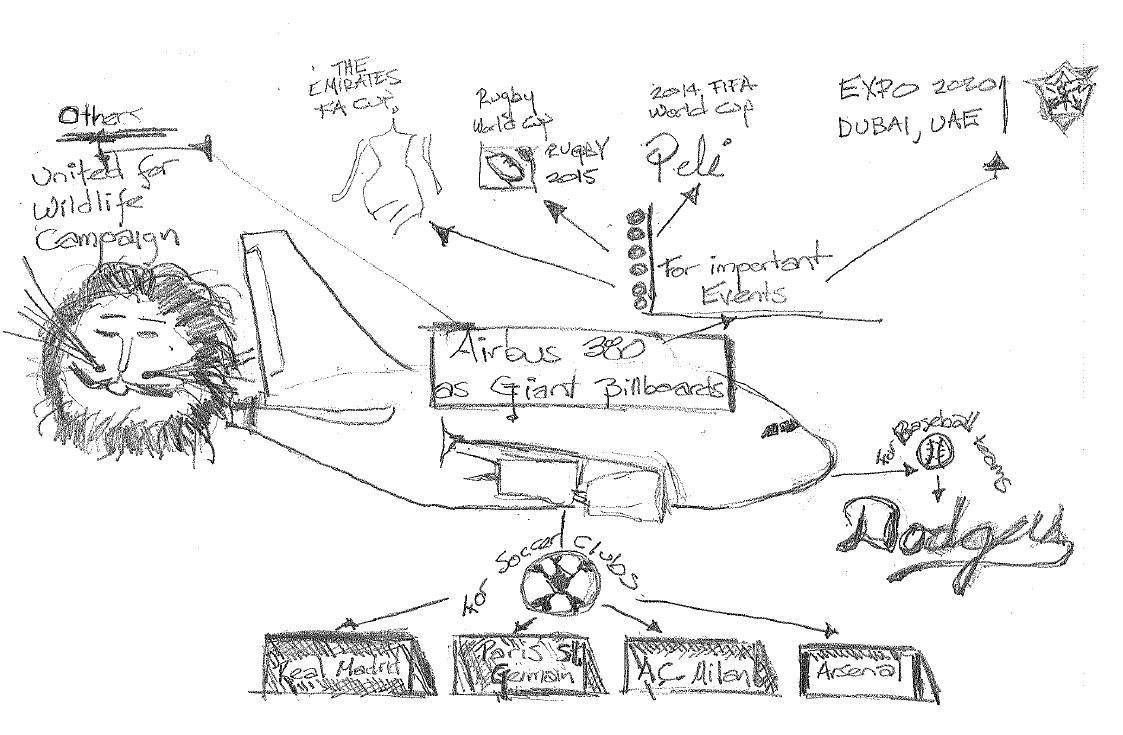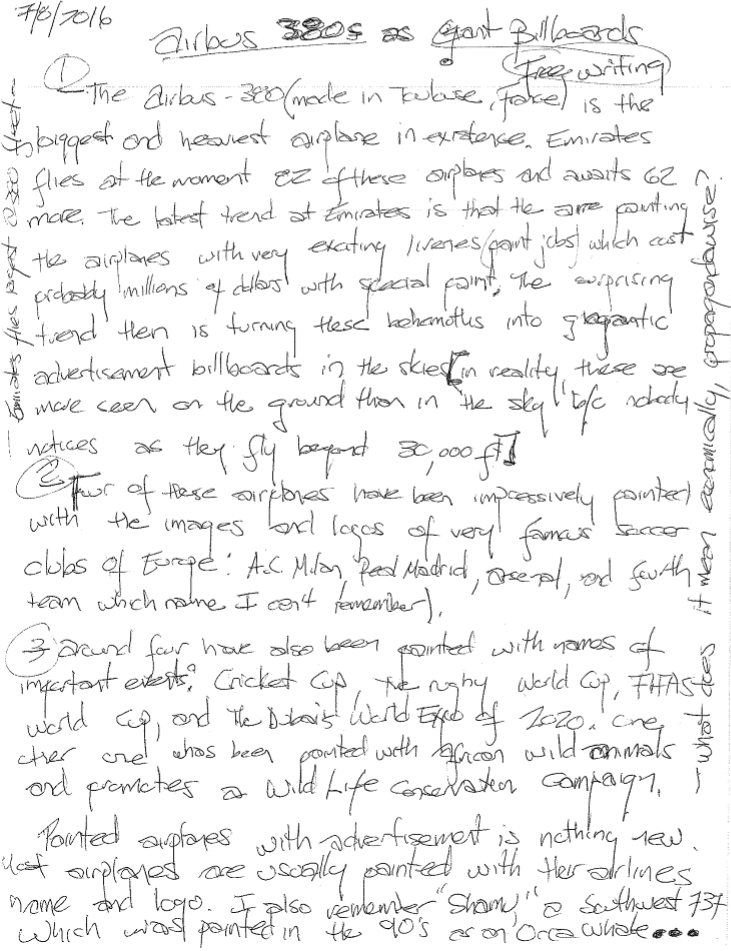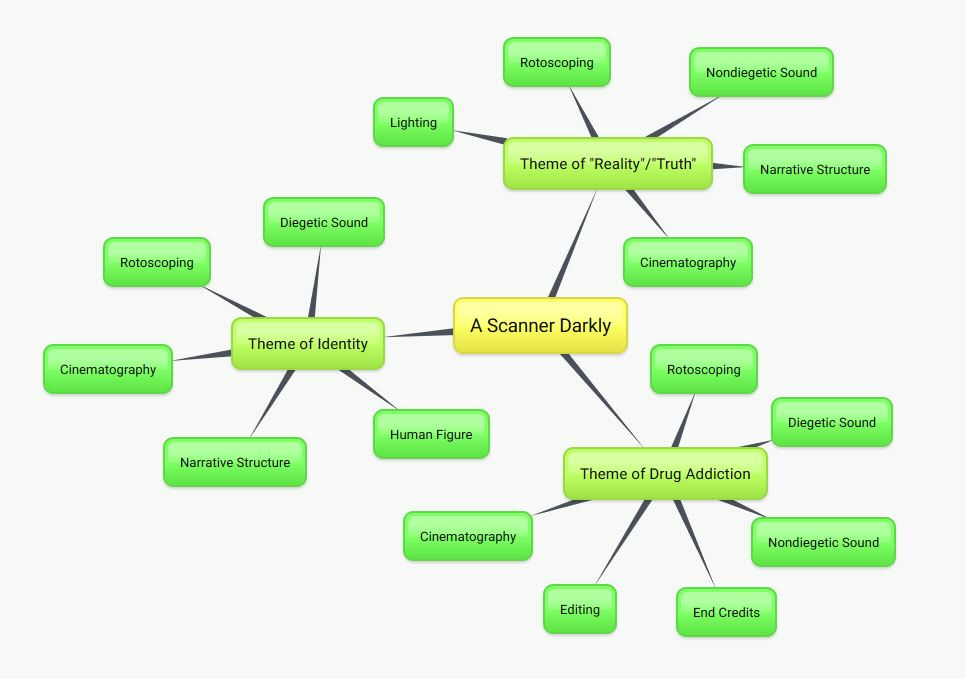Prewriting is an important step in the writing process. Fully exploring your ideas and planning out how they will take shape in your paper will ensure you are able to achieve your purpose. Depending on your learning style, some prewriting strategies may work better for you than others.
One common prewriting method is thought mapping/webbing, which can complement kinesthetic and visual learning styles.
How do you thought map/web?
To create a map or a web, you can start at the core topic and work your way out by adding branches. These branches could determine your subtopics (which could also produce more subtopic branches).
You could also begin with a narrower topic (branch) and connect it to a broader topic. When explored, these branches can lead to other sub points/topics that you may not have thought about before.
Keep in mind:
- Thought mapping/webbing often have to be done on paper since it’s time consuming to do them on the computer (but you can use the “Smart Art” tools in Word or use drawing apps with a stylus if you feel that works better for you than by hand).
- The ideas in a map or web can be transformed into or used as a visual form of outlining.
- Thought mapping or webbing is almost always used when your topic is more general or broad or not constrained by time or space, and the ideas do not need to be written in a particular order.
- Mapping/webbing coaches the writer into thinking about how the first draft will be organized. It is not meant to help you determine organization quite yet but can help you develop ideas in context with one another to start to see the structure/organization you might use.
Why should you map/web?
- Thought mapping/webbing helps you to identify gaps in your knowledge to research later.
- Thought mapping/webbing has the most visual appeal of any of the prewriting strategies.
- With thought mapping/webbing, you are able to work on a blank open space canvas, and are not restricted to the lines on a piece of paper (you are also not limited to single sheet of paper, especially if you work on the computer).
- Thought mapping/webbing can help generate subtopics. It can also help you figure out if your topic is too narrow or too broad (can see broader topics, narrower topics, and associated topics). You can either step forward (if too broad) or step backward (if too narrow).
- Thought mapping/webbing can help to determine relationships between points or processes and to see the start to an order in their chaos of ideas.
Tip: Staying Organized
Color coding, using shapes, and manipulating the size of your various elements can keep you organized and your thought map/web from getting too confusing. Different points will relate to each other or need to show a hierarchal order, so these tools can come in handy.
Did you know?
While we have talked about thought mapping/webbing as part of the prewriting process, it can be used in other ways. These prewriting strategies build on one another and aren’t mutually exclusive – you can use one and then use another to further hone your ideas.
You could start with something like freewriting or listing, and then your second step is to take the information you gathered and then map it out – it might be a second step instead of the first step in your writing process. Experiment with them and see what works best for you and your learning style!
Thought Map Example One

This student was very visual with this thought map – they drew out elements of their topic to make it more interesting, recognizable, and inspiring.
This thought map is organized into groups – “important events,” “baseball teams,” “soccer clubs,” and “others” – to help the author begin to think about organization.
Double Up!
This student used two prewriting strategies to get started on their paper. You can see their freewrite below. From this, they were able to create the thought map above, which pushes them closer toward finding their organization for their paper, and details for their body paragraphs.

Thought Map Example Two

There’s an app for that!
This student used the website bubbl.us to create this thought map – it’s a neat software that allows you to organize your ideas in a variety of visual ways to create successful and effective thought maps. While the above example is extremely visual with drawings to keep the student interested in the task, not all thought maps need to be. So try out bubbl.us or draw out your own web just using text and a series of lines to sort out points and subpoints!
The app automatically color codes the various levels of your web, so use that to your advantage!
This student has organized their thoughts by looking at various themes of a movie, and which film elements they could discuss as evidence for their claims. They could easily turn this into an outline as a “step 2” of the prewriting process!


